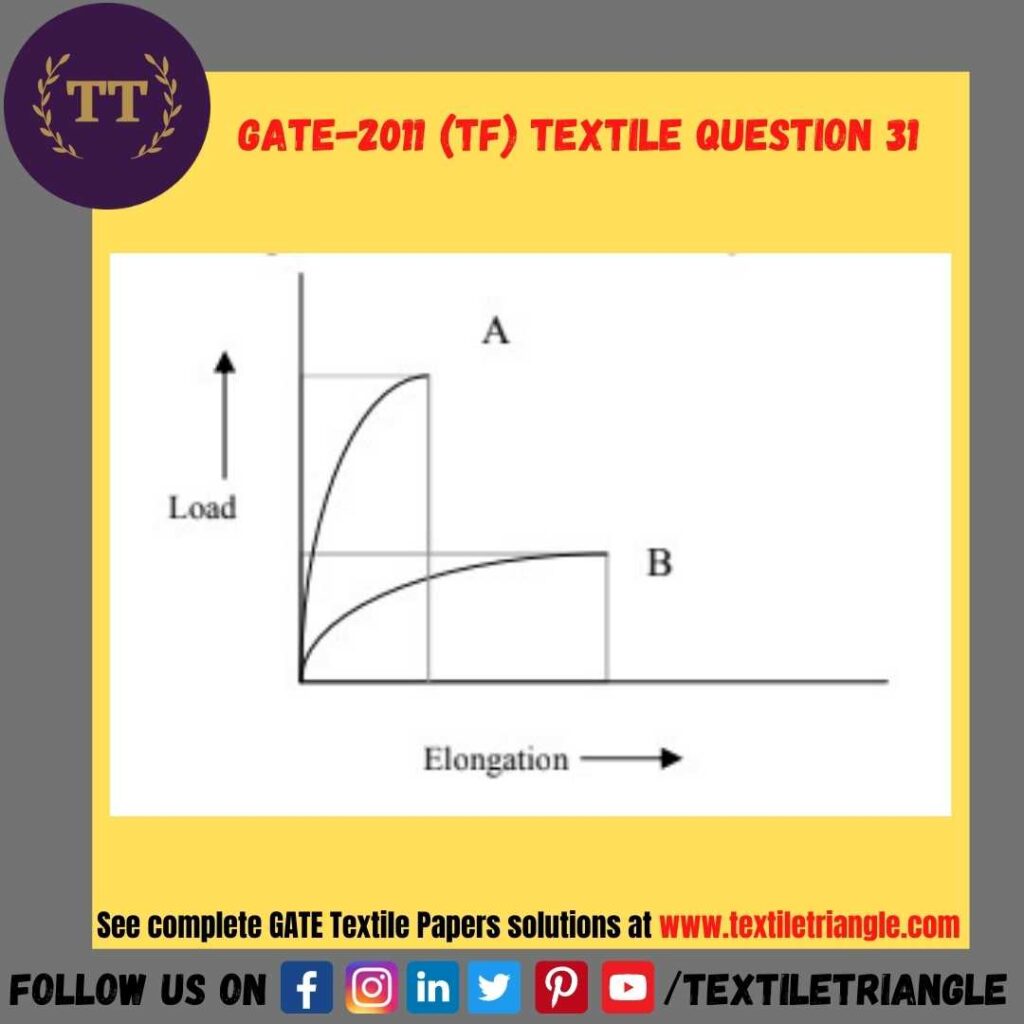Question 31 (Textile Engineering & Fibre Science)
Given below are the load-elongation characteristics of two monofilament yarns A and B having the
same denier and the work of rupture. Consider the following assertion [a] and reason [r].

[a] Fabrics made from these two yarns, with the same weave and sett, will have the same resistance
to high impact.
[r] The work of rupture of the two fabrics is the same.
| (A) | [a] is right and [r] is wrong |
| (B) | [a] is wrong and [r] is right |
| (C) | Both [a] and [r] are right |
| (D) | Both [a] and [r] are wrong |
[Show Answer]
D
Frequently Asked Questions | FAQs
What is work of rupture?
Work of rupture, also known as the work to break or tear a material, is a measure of the energy required to completely fracture a material. It is a mechanical property that characterizes the strength and toughness of a material and is usually expressed in joules per square meter or in foot-pounds per square inch.
The work of rupture is determined by subjecting a material to a tensile stress until it fractures, and measuring the total amount of energy required to break it. This includes the energy required to initiate the crack or fracture, as well as the energy required to propagate the crack through the material until it completely fails.
The work of rupture is an important property of materials used in applications where they may be subjected to high stress or impact loads, such as in structural components, construction materials, and safety equipment. Materials with a high work of rupture are generally more resistant to fracture and exhibit greater toughness, while materials with a low work of rupture are more brittle and prone to fracture under stress.
